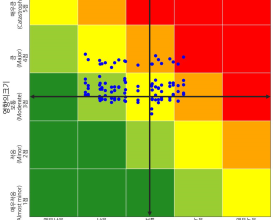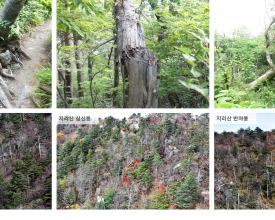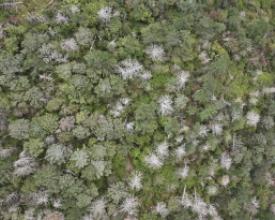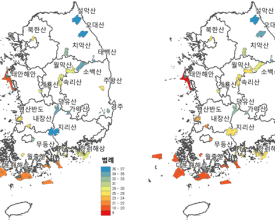
Assess and analyze climate change risks of Korea's national parks to formulate adaptation measures
Snapshot Solution
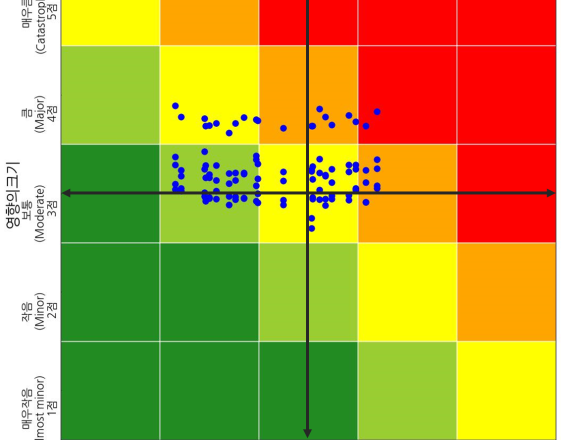
Analysis of the Heat Wave Risk Matrix
Korea National Park Service(KNPS)
In accordance with Article 41 of Korea‘s Framework Act On Carbon Neutrality And Green Growth For Coping With Climate Crisis, KNPS is required to formulate and implement measures for adaptation to climate crisis.
KNPS conducted climate change risk assessments of national parks’ facilities, ecosystems, employees and public services, and predicted climate change risks of ecosystems utilizing the MOTIVE Ecosystem, the impact assessment model that considers the habitat environment of species.
It then devised an adaptation strategy and measures based on the results and SWOT analysis of the institution.
According to the results, the species distribution of northern lineage plants shows a declining trend in national parks in southern and coastal areas over time. Southern lineage plants are moving north towards higher-latitude regions. The analysis found that there were many Korean endemic species that wither in national parks located in the south part of the country, namely Jirisan, Mudeungsan, and Naejangsan National Parks.
Last update: 08 Sep 2023
233 Views
Context
Challenges addressed
Location
Jirisan National Park, 마천면 삼정리, Hamyang, Gyeongsangnam-do 50057, South Korea
Naejangsan National Park, 내장산로 936 (내장동), Jeongeup, Jeollabuk-do 56199, South Korea
Mudeungsan, 동구 동산길 29, Gwangju, 61493, South Korea
Wolchulsan National Park
West Asia, Middle East
Impacts
Changing geographical habitats of those species were predicted due to climate change.
Home to 66% (177 species) of the country’s endangered species (267 species), national parks are an ecosystem’s treasure house. However, the climate risk assessment shows that ecosystems of national parks (living resources and habitats) are vulnerable to climate risks in the order of heat wave, torrential rain, cold wave and heavy snow, and therefore need protection.
Among those required to formulate adaptation measures, KNPS is the only public institution to focus on ecosystems, aside from facilities vulnerable to climate crisis. However, a risk assessment method based on the checklist, which was proposed by the Ministry of Environment, can only calculate the likelihood and impact of climate risk factors for ecosystems. This means that it does not cover changing distribution trends among species that may emerge in the future due to climate change. To fill this gap, KNPS added a risk assessment using an impact assessment model so that it can predict shifts related to plants threatened by climate change.
The use of an impact assessment model in risk assessments has significance because it allows for predicting future (next 20 years) trends in species distribution for Korea’s plants threatened by climate change, given that national parks are spread across the country.
Sustainable Development Goals
SDG 13 – Climate action

